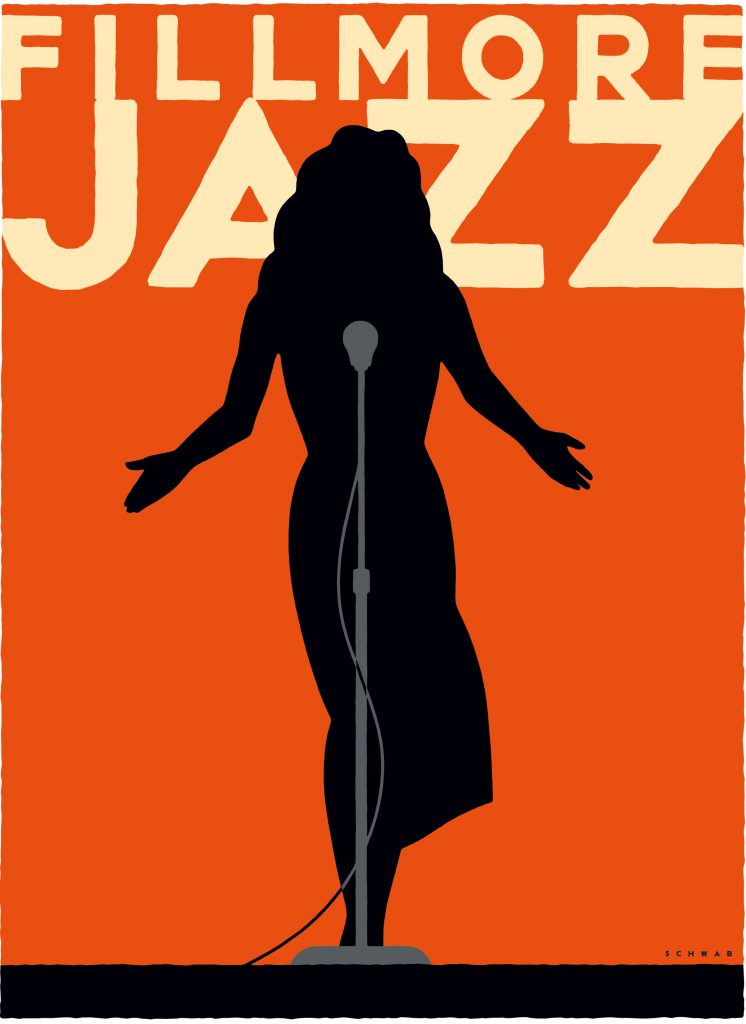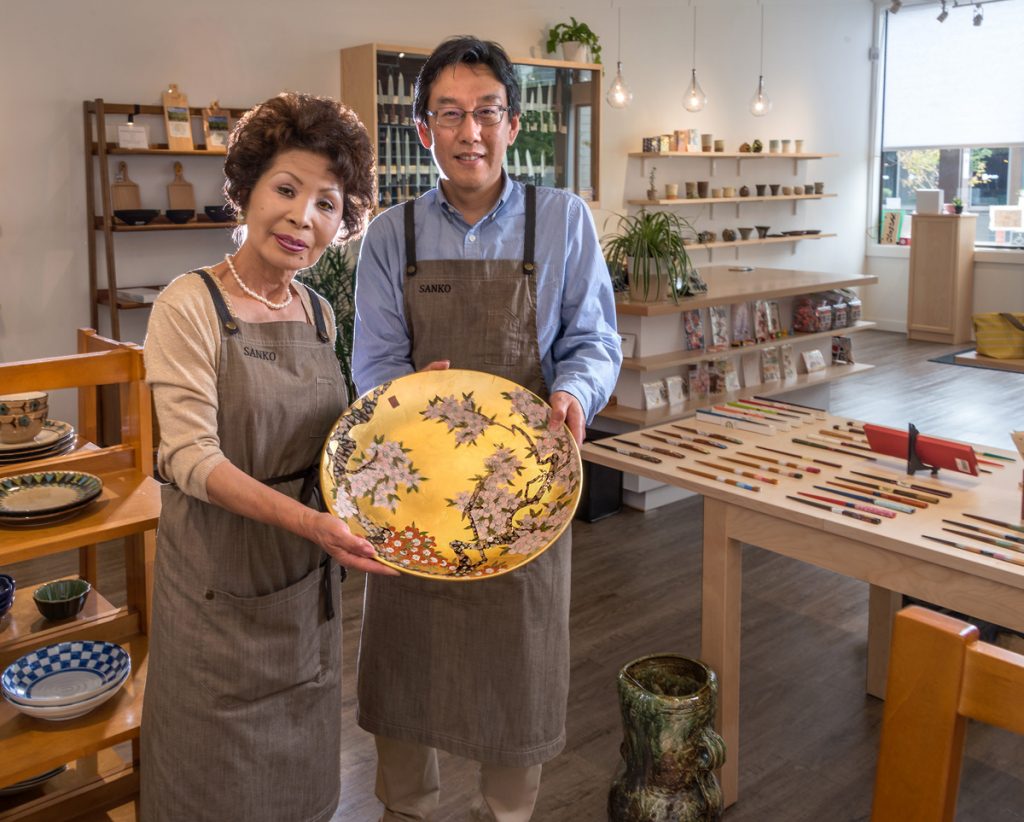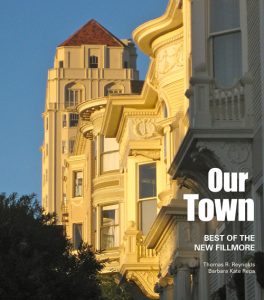Story & Photograph by FRANK WING
Sanko Kitchen Essentials, the anchor shop at the northeast end of Japantown’s Buchanan Street Mall, is sporting a new look these days.
For more than 35 years, it has been the go-to purveyor of hard to find Japanese cookware, unique bento boxes, exotic children’s lunch pails and enough teacups for every day of the year. But recently it has been transformed into an elegant gallery of fine ceramics imported from Japan.
Her perfectly coifed hair and movie star makeup remind longtime Sanko customers that Mariko Suzuki once was the hair stylist and make-up artist who transformed the Cherry Blossom Festival queen and her retinue for their annual parade float.
For the past 35 years, however, Suzuki has been best known as the cultural stylist extraordinaire for Japanese restaurants and sushi bars. Kitchen designers, chefs and architects have all come to her for her cultural knowledge, as well as her access to direct imports of Japanese style cookware and table service — often bringing over containers filled with 200 or more place settings of custom-designed gourmet dishes. When the St. Francis, Fairmont, Nikko, Sheraton and Mark Hopkins hotels were setting up their sushi-themed restaurants, they all sought her out as a consultant.
♦
Ever the voluble and friendly hostess of her domain, Suzuki continues to greet each visitor to the shop. However, at the beginning of the year, the store technically changed hands.
“Now I’m an employee — and he’s my boss,” she says, pointing to new manager Tomoaki Takashima. Earlier this year, Suzuki sold the business to her longtime Japanese importer, JPT America Inc., which kept all the staff to continue to run the store. Under the new ownership and with the new infusion of funds, Suzuki was able to implement a major redesign of the space.
If you had popped into her cookware store a few months ago, you would have been surrounded by a large collection of small specialized Japanese kitchen appliances: rice cookers, butane grills and steamers and countless food containers that took years to acquire. Now most of the cookware is gone — and in a remarkable makeover, the whole space has taken on the look and feel of an upscale gallery focusing mainly on artistic works.
When she first started out, Suzuki envisioned her dream job: “I wanted to visit my parents and family in Japan and still have a nice business in San Francisco,” she says, “so I rented the small space first and eventually expanded into this large double space.” She was able to visit Japan twice a year, in both winter and summer, when the trade shows were held in Tokyo. By dealing directly with suppliers, she could supply Sanko Kitchen Essentials with unique items not usually imported into the U.S.
♦
Over the years, Suzuki also delved into the artistic history of some of the pottery she ordered and has visited many of the production studios and artists she represents from all over Japan. Some of the most famous pottery has a raku or crackled glaze called the “Hagi-yaki” — yaki essentially meaning ware — and comes from Yamaguchi prefecture. All are hand made and individually fired.
Kyoto was a favorite town for her, since it was the place where the tea ceremony was initiated and the traditional teapots and accessories were developed locally. She now sells many of the pieces she saw being made there.
Other pieces can also be identified by locale. She says: “If you see raccoons in many various forms — statues, toys, ceramic mugs or painted on — they typically come from Shigaraki near Hiroshima.”
The front window showcases five distinct styles of ceramic art, from the smooth translucent porcelain glaze of high fired clay made in the Ishakawa prefecture, called Kutani yaki, to the rough textured low fired hand made pottery that varies with each batch called Mashiko yaki, made near Tokyo. A favorite trip took her near Nagoya, where she saw the famous climbing kilns with interconnected chambers that “climb” up a slope — the updraft increasing the temperature in each higher chamber.
Wood fire ash is deposited on the pottery as the heat exhaust rises, creating the unpredictable but uniquely textural ash glaze drippings known as Tokoname yaki.
The studios once made the terra cotta chimneys used all over the country. But as electricity became more prevalent, the need for chimneys decreased and they turned to making tea services in the classic honey cinnamon chimney color.
♦
Suzuki says she has no regrets about selling her dream business, because now she has a gallery-like store to showcase the elegant artistic pottery she has spent long years sourcing.
Once again, it’s a dream job.
Filed under: Retail Report





